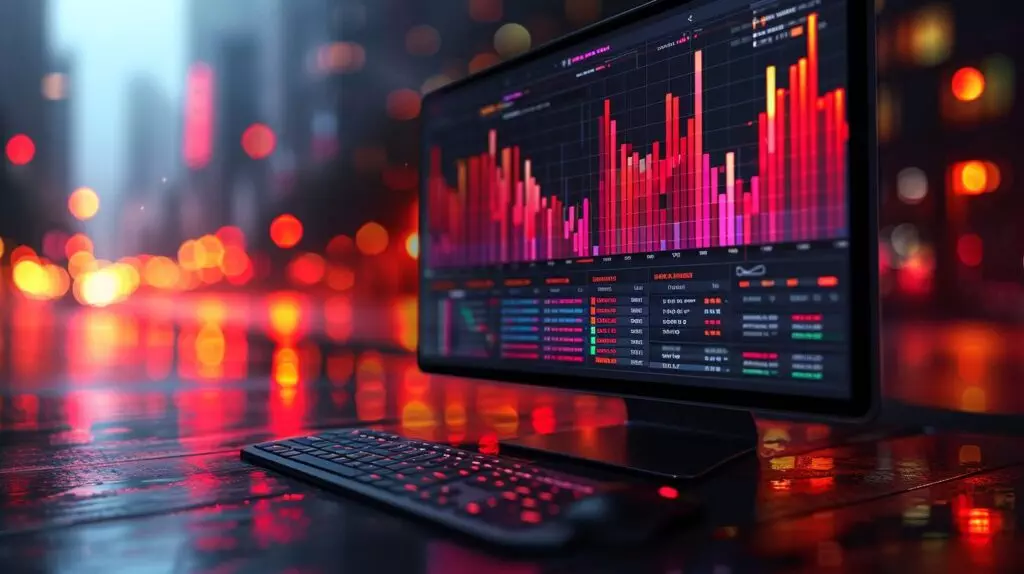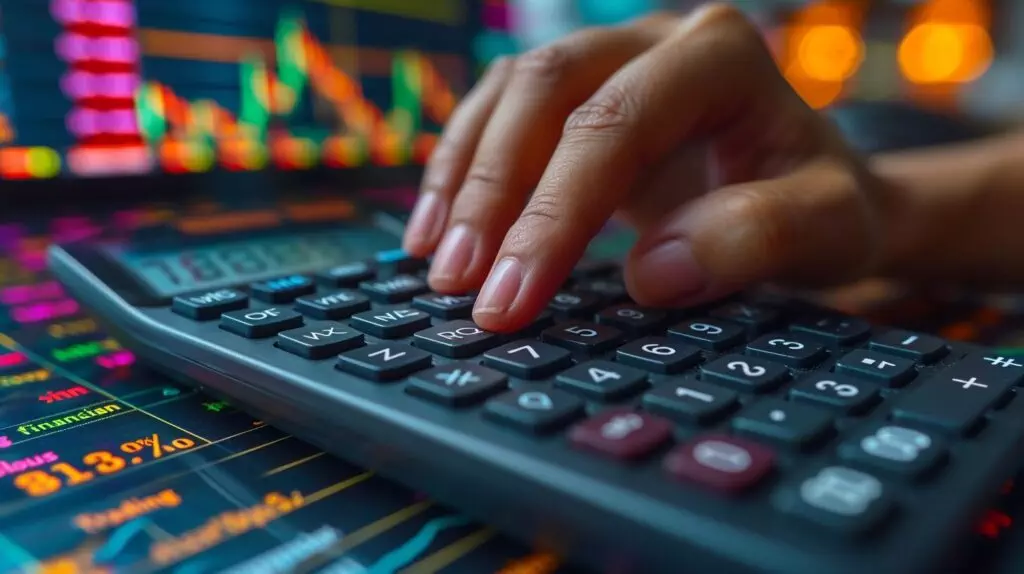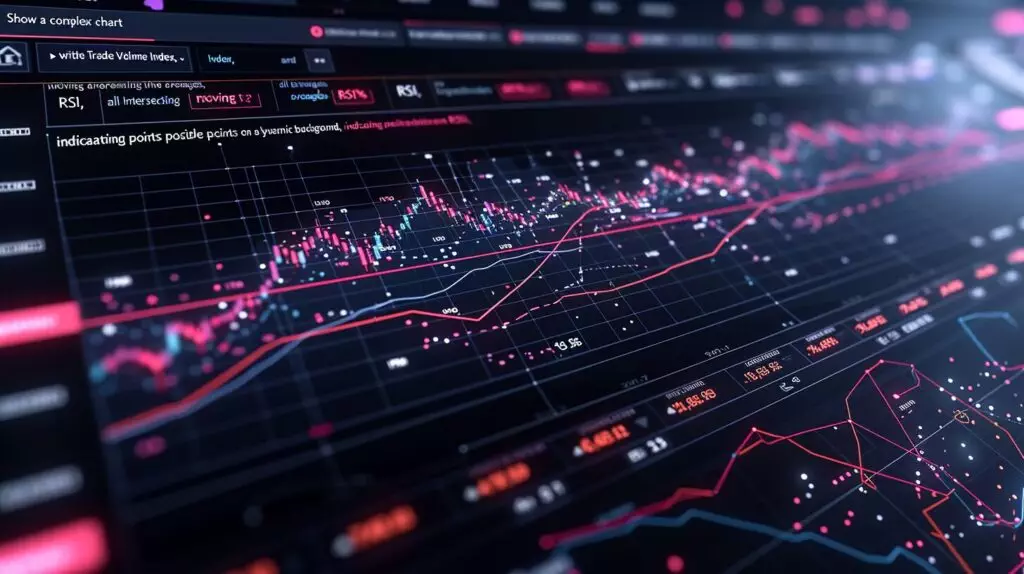Within the expansive sphere of financial markets, certain tools frequently get overshadowed. The Trading Volume Index (TVI) is a potent but usually disregarded indicator that doesn’t always receive the acknowledgement it rightfully deserves.
TVI offers invaluable insights into market trends and momentum by tracking the volume of shares traded. Despite its utility, many traders underestimate its value. This article aims to unravel the mysteries and hidden power of data-powered indicators such as the TVI Indicator and Money Flow Index.
Key Takeaways
- Trading volume refers to the number of shares or contracts traded in a security or market during a given period and can indicate significant price movement.
- The Trade Volume Index (TVI) is a volume-based indicator that moves in the same direction as the trading volume and measures the amount of money flowing in and out of a security.
- TVI can help predict future price movements, with a rising TVI suggesting more investors buying the stock and potentially driving its price up.
- TVI can be used to identify market trends, validate breakout signals, and differentiate between uptick and downtick volume in different trading scenarios.
Understanding the Basics of Trading Volume and Trade Volume Index

Trading volume refers to the number of shares or contracts traded in a security or market during a given period. It’s an important volume indicator as it shows the level of interest and activity in a stock. A high trading volume can indicate a significant price movement and often serves to confirm trends and chart patterns.
Conversely, the Trade Volume Index (TVI) is a volume-based indicator that moves with trading volume. The TVI indicator measures the amount of money flowing in and out of a security and can help predict future price movements. A rising TVI suggests more investors are buying the stock, potentially driving its price up, whereas a falling TVI may hint at increased selling pressure, potentially leading to a price decrease.
Understanding the relationship between trading volume and price trends is crucial for generating effective trading signals. A surge in trading volume often precedes a price change, providing an early warning sign of a potential swing. If trading volume decreases while the price continues to increase, as the Money Flow Index might suggest, it may suggest a weakening trend and a possible price reversal.
How to Calculate Trade Volume Index

The first step in calculating the TVI involves determining the Money Flow Multiplier (MFM). The formula is as follows: MFM = [(Close – Low) – (High – Close)] / (High – Low). The second step involves calculating the Money Flow Volume (MFV), which is done by multiplying the MFM with the volume for the period: MFV = MFM * Volume. Lastly, calculate the TVI by adding the previous TVI with the current MFV: TVI = Previous TVI + MFV.
The trading volume index is a running total of the Money Flow Volume. An increasing TVI, similar to a rising Money Flow Index, indicates buying pressure to accumulate, while a decrease hints at selling pressure to distribute. Though various software tools can simplify these calculations, understanding these numbers and their derivation is crucial for making informed trading decisions.
Using the Trade Volume Index to Identify Market Trends

The TVI indicator can be a powerful tool for traders. It can identify high-volume buying or selling, detect market reversals, and validate breakout signals.
Primarily, the trading volume index can identify high-volume buying or selling. A significant increase in the TVI implies buying, while a decrease indicates selling. This information can help understand the market’s momentum and potentially predict its direction.
Secondly, the TVI can detect market reversals. If the volume starts to decrease while the price trend continues to rise, it may signal a potential market reversal.
Lastly, the TVI indicator is useful in validating breakout signals. Breakouts occur when the price of a security moves above a resistance level or below a support level on significant volume. The TVI can validate the strength of the breakout signal, increasing our confidence in the trade.
Practical Application: How to Use the Trade Volume Index for Successful Trading

The practical application of the Trading Volume Index (TVI) in various trading scenarios, such as day trading, swing trading, or forex trading, can significantly contribute to our success.
For day trading, the TVI indicator can differentiate between uptick volume and downtick volume. For swing traders, the TVI is a powerful tool in defining market extremes. When the TVI or the Money Flow Index moves into extreme high or low territory, it indicates a potential market turn caused by substantial price changes and volume, giving us the chance to plan our entry and exit points. In forex trading, the TVI and Money Flow Index can analyze the buying and selling pressure, which depends on price changes and volume.
Advanced Strategies: Combining Trade Volume Index with Other Market Indicators

We can boost our trading strategies by integrating the Trade Volume Index with other prominent market indicators such as moving averages, RSI, and MACD.
We can confirm the underlying price trend by aligning the trading volume index with moving averages. If the volume is high while the price trend follows the direction of the moving average, it’s likely a strong trend.
Pairing the trading volume index with the Relative Strength Index (RSI) can identify turning points in the market when high trading volumes coincide with an overbought or oversold RSI.
Lastly, a crossover in the MACD line and the signal line, combined with a surge in the trading volume index, often indicates a strong momentum shift.
Conclusion
In conclusion, we’ve learned that the TVI indicator, when used correctly, can be a powerful tool for identifying market trends. By calculating and applying the TVI, we can make more informed trading decisions.
Furthermore, combining TVI with other market indicators can enhance our trading strategies, potentially leading to greater success. Remember, successful trading isn’t just about one tool like the Money Flow Index, but how you utilize a combination of them such as the use of Trade Volume Index.
Frequently Asked Questions
What is the Trading Volume Index (TVI)?
The Trading Volume Index (TVI) is an indicator that gauges the direction of a price trend based on the relationship between price changes and volume. It is used to measure whether a security is being bought or sold by traders.
How is the TVI calculated?
The TVI is calculated by first determining the cumulative volume and then subtracting the volume when price changes and volume occur together and the security’s price and its minimum tick value both increase and decrease. The result provides insights into the sentiment of traders towards the security.
What is the significance of using the Trade Volume Index (TVI) for traders?
Traders use the Trade Volume Index to identify high volume periods that coincide with substantial price changes, which can be indicative of a potential breakout or reversal in the security’s price trend.
How can traders utilize the TVI in their trading strategies?
Traders can utilize the TVI as a momentum indicator to confirm price movements and identify accumulation or distribution patterns. Additionally, it can assist in determining bullish or bearish sentiment based on the TVI’s movements.
Is the TVI only effective for intraday trading or can it be applied to longer-term strategies?
The TVI can be applied to both intraday and longer-term strategies, as it provides valuable insights into the cumulative volume and sentiment towards a security, regardless of the time frame being analyzed.



